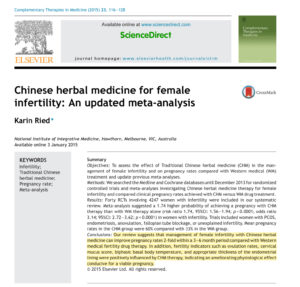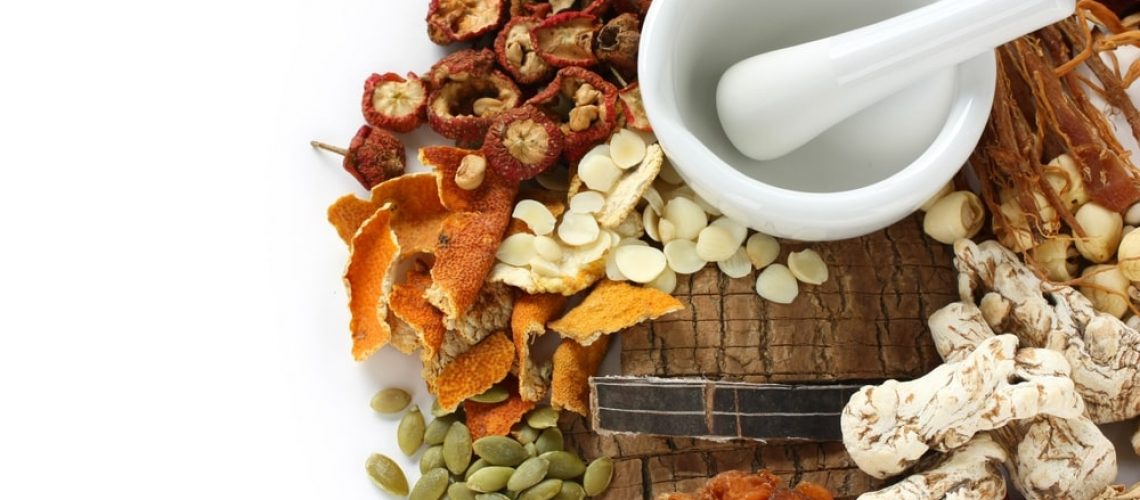In countries where traditional medicine is popular and widely used, fertility issues are approached by whole system medicine and are rarely treated with acupuncture alone. To fit current research models, researchers often resort to a single intervention in a carefully controlled experimental world, but this is an unfortunate price to pay.
Traditional Asian pharmaceuticals were discovered by trial and error, on the basis of what made the patient better as a whole. This trial-and-error approach to the development of therapeutics has been inefficient and has taken centuries to establish but it is paradigm blind.
Herbal medicine has been developed as a principal measure for women’s health issues and still remains as the first-line treatment for fertility enhancement for both men and women.
If you have fertility problems related to egg production and/or egg quality issues or the loss of organ reserve and energy production problems which are diagnosed as Diminished Ovarian Reserve (DOR), Premature Ovarian Failure (POF), or metabolic disorders such as PCOS, a custom-formulated herbal medication will be indicated as part of the treatment plan.
Many females over age 37 or who have been exposed to synthetic hormones long period would benefit angiogenic (vascular formation) pathway support using specialized herbal formulations. Angiogenesis is a critical factor in reproduction acting independently from the hormonal control of Hypothalamus-Pituitary-Ovarian axis. It has been repeatedly demonstrated that part of the underlying mechanism of action of herbal medicine for female reproductive diseases is explained by control of angiogenesis. Angiogenic pathway support is strongly indicated in cases of implantation failure due to thin uterine lining problems arising from Clomid use or IVF controlled ovarian hyperstimulation.
Links:
Angiogenesis: Can you make new blood vessels?
Endometrial receptivity and implantation
The role of Angiogenesis in Reproduction
Clinical Research shows that Chinese Herbal Medicine can increase pregnancy rates
K Ried’s team performed a systematic review in 2011 looking at the use of Chinese herbal medicine in infertility treatment. They identified eight randomised controlled trials (RCTs), 13 cohort studies, three case series, and six case studies involving 1851 women suffering from infertility. Meta-analysis of the RCTs suggested a 3.5 greater likelihood of achieving pregnancy with Chinese Herbal Medicine therapy over a four-month period compared with Western drug (clomiphene) therapy alone. They suggested that the management of female infertility with Chinese Herbal Medicine could improve pregnancy rates two-fold. They also found that assessment of the quality of the menstrual cycle, integral to TCM diagnosis, appears to be fundamental to the successful treatment of female infertility.
Reference:
Efficacy of Traditional Chinese Herbal Medicine in the management of female infertility: a systematic review.
The same group published an updated review of the same topic in 2015, where they collected data from 40 RCTs involving 4247 women suffering from infertility into a systematic review. In this study meta-analysis suggested a 1.74 higher probability of achieving pregnancy with CHM therapy than with Western therapy alone. In addition, the authors concluded that fertility indicators such as ovulation rates, cervical mucus scores, biphasic basal body temperatures, and appropriate thickness of the endometrial linings are positively influenced by CHM therapy, indicating an ameliorating physiological effect for a viable pregnancy.
Reference:
Chinese herbal medicine for female infertility: an updated meta-analysis.

There are many studies which aim to elucidate the mechanism of Chinese Herbal Medicine in the treatment of conditions frequently associated with infertility. The following are some of the underlying mechanisms associated with the efficacy of herbal medicine treatment.
- Promotion of endometrial receptivity in the uterus
- Stimulation of ovulated inhibition and treatment of ovary failure, and rise in hormonal levels
- Relaxation of the uterus and prevention of spontaneous abortion
- Promotion of the ovulation rate
- Treatment for ovulation failure and insufficient stored ova
- Reduction and treatment of miscarriage
- Treatment of mycoplasma infection
- Re-regulation of immunology disorder
- Treatment of many abnormal physical and psychiatric symptoms, such as anxiety, stress, and insomnia
References:
Chinese herbal medicine for the treatment of recurrent miscarriage: a systematic review of randomized clinical trials
S Li, S Luo (2010) Study on Kidney Tonifying of CHM to the Rat Models with Ovulated inhibition, Chinese Journal of Basic Medicine in TCM 16 (7): 567-569.
X Teng, et al. (2016) Study on mechanism of regulation and control of Yulin formula of CHM to hormone level and histomorphology of SD rat model of premature ovary failure. Assay of Master degree of TCM gynaecology, BUCM, China.
H Zhao, S Luo, et al. (2008) Effects of Zhuyun No3 Serum TG-Bl in Abortion Rats of Kidney Deficiency and Luteum Inhibition Shanghai. Journal of TCM 42(12): 71-73.

